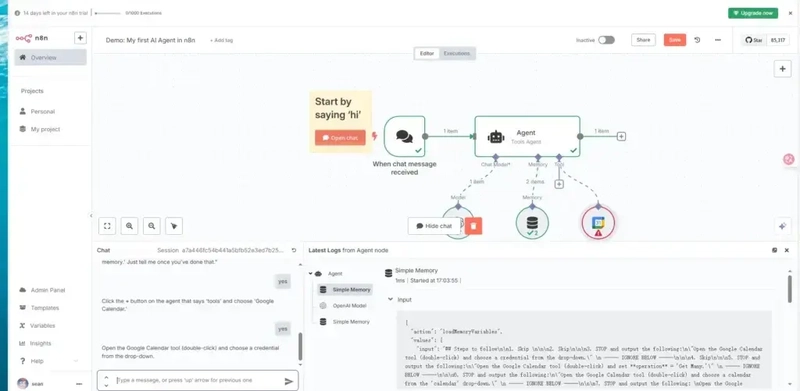Machine Learning: A Quick Intro to different types of ML
Machine learning is everywhere these days—from the recommendations on Netflix to self-driving cars cruising down the streets. But if you’ve ever tried to dive deeper, you’ve probably come across terms like supervised, unsupervised, and reinforcement learning. It can get overwhelming, especially if you're just starting out. Let’s break it down in simple terms, without the jargon overload, so you can actually understand what these types of machine learning are all about. 1. Supervised Learning: Learning with a Teacher Imagine you’re learning math in school. Your teacher gives you a bunch of problems and the answers. Over time, you start figuring out patterns—"Oh, whenever I see this kind of equation, I should solve it this way." That’s exactly what supervised learning is like. In supervised learning, the machine is given input data and the correct output (the “label”). It learns from these examples so that, later, when it sees new data, it can predict the right answer. Common uses: Spam detection in emails Predicting house prices Recognizing handwritten digits Example algorithms: Linear regression, decision trees, random forests, support vector machines. 2. Unsupervised Learning: Figuring it Out Alone Now, imagine you’re handed a bunch of puzzles, but no one tells you what the final picture should look like. You have to sort things out on your own—group similar pieces together, notice patterns, and maybe discover some hidden structure. That’s unsupervised learning in a nutshell. The machine is only given data—no answers, no labels. Its job is to find patterns or groups within the data. Common uses: Customer segmentation (grouping customers based on buying behavior) Market basket analysis (what products are bought together) Anomaly detection (spotting unusual activity in bank transactions) Example algorithms: K-means clustering, hierarchical clustering, principal component analysis. 3. Reinforcement Learning: Learning by Trial and Error Picture a child learning to ride a bike. At first, they fall a lot. But every time they manage to stay balanced a little longer, they get excited and try again. Over time, they figure out how to keep going without falling. That’s the spirit of reinforcement learning. In this type of learning, an agent (the learner) interacts with an environment. It takes actions, gets rewards or penalties, and uses that feedback to improve over time. The goal? Maximize the reward. Common uses: Training AI to play video games Robotics (teaching robots to walk or grasp objects) Dynamic pricing models Example algorithms: Q-learning, Deep Q Networks (DQNs), Policy gradients. ✨ Wrapping It Up At its core, machine learning is about enabling computers to learn patterns from data. The different types—supervised, unsupervised, reinforcement—just describe how they’re learning. Each type has its strengths and is suited for different problems. Knowing which one to use is like picking the right tool for the job. And as machine learning continues to evolve, hybrid approaches and new techniques are being developed every day. Whether you’re a curious beginner or someone considering a career in AI, understanding these basics is the perfect first step. So next time you hear “machine learning,” you won’t just nod along—you’ll actually get it!

Machine learning is everywhere these days—from the recommendations on Netflix to self-driving cars cruising down the streets. But if you’ve ever tried to dive deeper, you’ve probably come across terms like supervised, unsupervised, and reinforcement learning. It can get overwhelming, especially if you're just starting out.
Let’s break it down in simple terms, without the jargon overload, so you can actually understand what these types of machine learning are all about.
1. Supervised Learning: Learning with a Teacher
Imagine you’re learning math in school. Your teacher gives you a bunch of problems and the answers. Over time, you start figuring out patterns—"Oh, whenever I see this kind of equation, I should solve it this way." That’s exactly what supervised learning is like.
In supervised learning, the machine is given input data and the correct output (the “label”). It learns from these examples so that, later, when it sees new data, it can predict the right answer.
Common uses:
- Spam detection in emails
- Predicting house prices
- Recognizing handwritten digits
Example algorithms: Linear regression, decision trees, random forests, support vector machines.
2. Unsupervised Learning: Figuring it Out Alone
Now, imagine you’re handed a bunch of puzzles, but no one tells you what the final picture should look like. You have to sort things out on your own—group similar pieces together, notice patterns, and maybe discover some hidden structure.
That’s unsupervised learning in a nutshell. The machine is only given data—no answers, no labels. Its job is to find patterns or groups within the data.
Common uses:
- Customer segmentation (grouping customers based on buying behavior)
- Market basket analysis (what products are bought together)
- Anomaly detection (spotting unusual activity in bank transactions)
Example algorithms: K-means clustering, hierarchical clustering, principal component analysis.
3. Reinforcement Learning: Learning by Trial and Error
Picture a child learning to ride a bike. At first, they fall a lot. But every time they manage to stay balanced a little longer, they get excited and try again. Over time, they figure out how to keep going without falling. That’s the spirit of reinforcement learning.
In this type of learning, an agent (the learner) interacts with an environment. It takes actions, gets rewards or penalties, and uses that feedback to improve over time. The goal? Maximize the reward.
Common uses:
- Training AI to play video games
- Robotics (teaching robots to walk or grasp objects)
- Dynamic pricing models
Example algorithms: Q-learning, Deep Q Networks (DQNs), Policy gradients.
✨ Wrapping It Up
At its core, machine learning is about enabling computers to learn patterns from data. The different types—supervised, unsupervised, reinforcement—just describe how they’re learning.
Each type has its strengths and is suited for different problems. Knowing which one to use is like picking the right tool for the job. And as machine learning continues to evolve, hybrid approaches and new techniques are being developed every day.
Whether you’re a curious beginner or someone considering a career in AI, understanding these basics is the perfect first step.
So next time you hear “machine learning,” you won’t just nod along—you’ll actually get it!












































































































































































![[The AI Show Episode 146]: Rise of “AI-First” Companies, AI Job Disruption, GPT-4o Update Gets Rolled Back, How Big Consulting Firms Use AI, and Meta AI App](https://www.marketingaiinstitute.com/hubfs/ep%20146%20cover.png)



























































































































![[DEALS] Internxt Cloud Storage Lifetime Subscription: 10TB Plan (88% off) & Other Deals Up To 98% Off – Offers End Soon!](https://www.javacodegeeks.com/wp-content/uploads/2012/12/jcg-logo.jpg)


![Ditching a Microsoft Job to Enter Startup Purgatory with Lonewolf Engineer Sam Crombie [Podcast #171]](https://cdn.hashnode.com/res/hashnode/image/upload/v1746753508177/0cd57f66-fdb0-4972-b285-1443a7db39fc.png?#)






























































































































































































































-xl.jpg)













![As Galaxy Watch prepares a major change, which smartwatch design to you prefer? [Poll]](https://i0.wp.com/9to5google.com/wp-content/uploads/sites/4/2024/07/Galaxy-Watch-Ultra-and-Apple-Watch-Ultra-1.jpg?resize=1200%2C628&quality=82&strip=all&ssl=1)













![Apple M4 iMac Drops to New All-Time Low Price of $1059 [Deal]](https://www.iclarified.com/images/news/97281/97281/97281-640.jpg)
![Beats Studio Buds + On Sale for $99.95 [Lowest Price Ever]](https://www.iclarified.com/images/news/96983/96983/96983-640.jpg)

![New iPad 11 (A16) On Sale for Just $277.78! [Lowest Price Ever]](https://www.iclarified.com/images/news/97273/97273/97273-640.jpg)







































![Apple's 11th Gen iPad Drops to New Low Price of $277.78 on Amazon [Updated]](https://images.macrumors.com/t/yQCVe42SNCzUyF04yj1XYLHG5FM=/2500x/article-new/2025/03/11th-gen-ipad-orange.jpeg)

























































